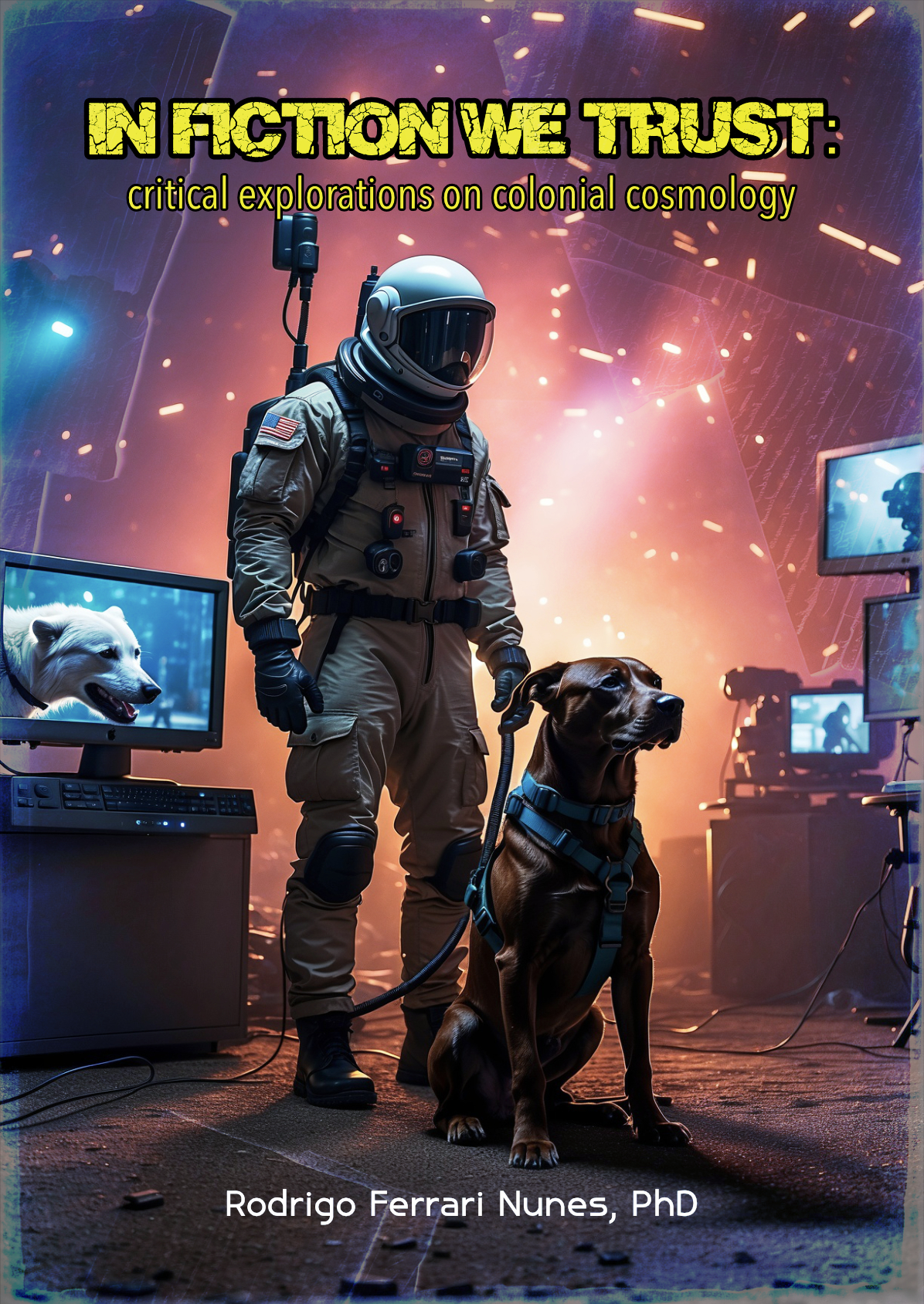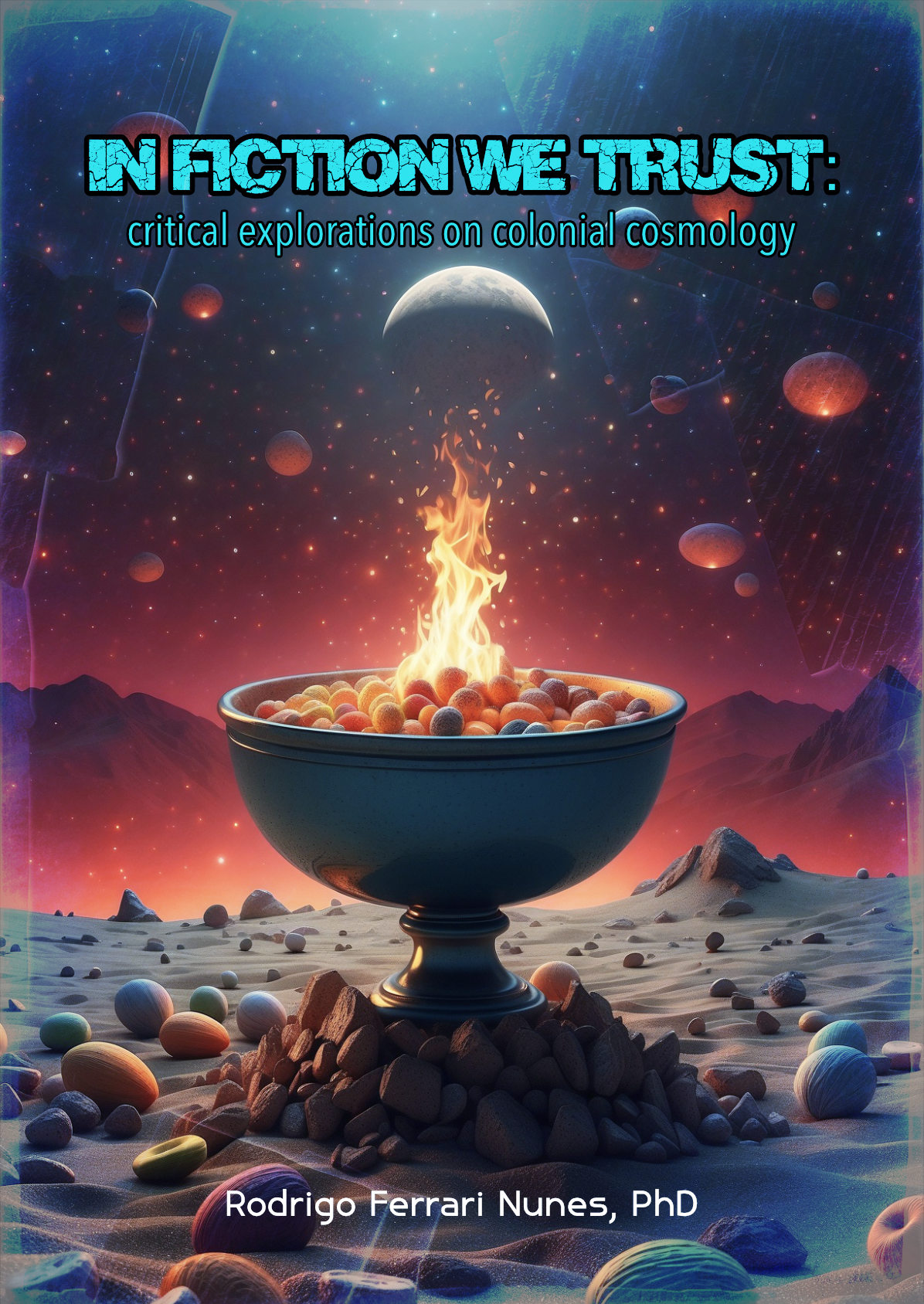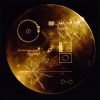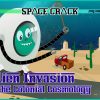
COSMIC BOOGIEMEN & MESSIAHS
Governments and their space agencies constantly promote messianic boogiemen scenarios, and present themselves as the only ones who possess the knowledge to solve such existential threats. The future solutions, they tell us, will come from funding perfect expert scientists. For the believer, such characters are beyond any suspicion, and are both infallible and incorruptible. Even if what they present as evidence is simply computer generated images and overhyped stories.
Both what I call boogieman and messianic storylines play key roles in modern space exploration lore. They work together like the extremities of a swinging pendulum. This combination uses destruction forecasts and heroic missions that can eventually save humanity, if given enough time, funding and resources. Believers are mesmerized by the pendulum’s unending motions.
Total destruction is hyped as potentially imminent, unpredictable and unavoidable, especially on the long run, in millions and billions of years. This makes so that concocting and funding plans to leave the Earth and colonize the solar system, the galaxy and the universe, albeit impossible, seems like an easy and natural progression for most believers. They have sen the same scenario play out in countless science fiction stories. Having unwittingly become passive receivers, they are at the mercy of the emotions the stories illicit.
SOURCING THREATS & SOLUTIONS
NASA promotes stories of widespread destruction while presenting itself as a messianic agency destined to save the world. NASA openly claims that they need to explore space and bring humans to other planets because our world is destined to destruction and humans to extinction. The agency poses as the chosen ones who will spread their culture over the universe, in order to represent the whole of humanity, regardless of whether or not people support them.
This absurd, ethnocentric and megalomaniac claim is somehow, for believers, an actual hope that they can hold on to. Space agencies repeatedly promote sensationalist and alarmist fictions to attract funds for allegedly protecting the Earth from asteroids and space debris. The amount of money wasted and that could be actually used for improving people’s lives is staggering. Just the International Space Station, a simulation that uses a combination of green screen, augmented reality, stage sets aboard parabolic flights, and swimming pools for the so-called spacewalks, had a cost of over 100 billion dollars by 2010.
IMMINENT ANNIHILATION
The fear of annihilation they feel comes from the deep-set materialism that accompanies the theories they accept. Its dogmatic foundations leave no room for doubt. If the Earth were to be destroyed, life would have to start evolving, again for billions of years. For believers, this would represent a major setback for so-called civilization. Thus, they take up the mission of saving humanity and the world, which may provide enough motivation to last for the rest of their lives.
The Apollo Effect, noted earlier, refers to the power of this fictional enthusiasm. Thus, the boogiemen-messiah formula transmutes the fear of cosmic boogiemen into widespread inspiration, enthusiasm, action and the promise of technological developments that trickle down to the rest of society. At least that is how the myth goes. As far as this work is concerned, it is just another example of the power of fiction to get people to move.
After all, they worry, how will the human species be preserved and continue evolving? For them, any plan and any story can sound feasible since anything, even the impossible, is suddenly possible and worth pursuing in the name of space exploration.
THE SUPERMAN ESCAPE PLOT
For many believers, one solution to Earth’s eventual destruction, overpopulation, and climate change, and humanity’s extinction is leaving the Earth and finding another place to colonize and thrive. Science fiction makes it easy. Just get your computer to plot the hyperdrive jump across space and voilà, you are saved from annihilation and humanity is saved, even if it that means only your descendants.
This plot and its variations go back a long way in the history of eugenics and its hero, Superman, the popular white human-alien superhero. In that story, the planet Krypton is about to be destroyed by a natural disaster which most people are trying to deny. A scientist who knows better, Superman’s father, sends his infant boy to Earth in a space ship right at the cusp of the planetary catastrophe.
A cliché that goes back to the story of Noah’s Ark is also employed here: Superman’s scholar father tries to warn the entire population that Krypton’s destruction is imminent, but nobody believes him until it finally happens. This gives Superman messianic overtones.
Even though the boy travels for years in outer space in total confinement, he somehow grows normally, and arrives on the Earth in a meteoric blaze. He immediately enjoy magical superpowers, such as flying at will and as fast as he wants, seeing through walls with X-ray vision, and even a burning-hot laser gaze that can melt steel. Superman survives and becomes a superhero. He is just not interested in solving any socioeconomic problems. He never dares to question the government and its alleged authority.
As the story goes, all these superpowers exist because he was born in the planet Krypton. The effects of the Earth and the Sun make him superhuman. He needed some kind of deadly vulnerability, so meteors from Krypton became the solution. After Krypton’s explosion, several pieces of it flew off, and some eventually ended up on Earth. Stones from Krypton became the ill-famed Kryptonite, which turns Superman into just another weakling, ordinary human.
UNIVERSAL COLONIALISM
The idea that modern cultures and States are so excellent that they should export themselves to other planets, considering how many socioeconomic problems they are unable to fix on the Earth, is comically unrealistic. Whenever space colonization in the long term is mentioned, some form of evolutionary theory is featured.
Both cosmology and biology and intertwined into a vision of what it means to be human in this world. The version that supports the colonial cosmology postulates that life started from a primeval soup and electrical sparks, changing from disconnected DNA to the creatures we have now. All sorts of imaginary just-so stories have been concocted according to this theoretical premise. Modern combinations of cosmology and biology allow for all sorts of combinations that do not have to be corroborated by actual tangible evidence. For instance, the claim that ancient dogs started living near the ocean and eventually turned into whales is conceivable. This would also be impossible in other disciplines.
Turning assumptions into mathematical formulae helped to support mainstream eugenicist and materialist theories. These doctrines are part of the foundation of the colonial cosmology. Any just-so scenario can be paired with some math to allow for claims that measuring something defined and selected as important supports the simplistic notion that it must have evolved by natural selection.

SAVING THE WORLD PRODUCTIONS
The mission called DART, or Double Asteroid Redirection Test, promoted the notion that the Earth is constantly at risk of being hit by a massive asteroid. While the boogieman plot provides fodder for widespread anxiety with an expectation of worldwide destruction, the space mission and the public provide the messianic solution, the only means to save the world.
The fact that artistic images created with computers have been used as façades for alleged space telescopes is kept far beyond the perceptual reach of believers. For them, fiction and reality are confused through the impression of authority and infallibility they ascribe to the actors that support the colonial cosmology. The stories and tricks they watch neuter their critical abilities, even if they were well developed in their own professions or regarding other matters.
They claim to have sent a probe into space that would eventually, years later, hit a very small asteroid that somehow orbits another small asteroid and slightly move it from its orbit with the impact. This would eventually lead to missions that would be able to protect planet Earth from an imminent extinction level impact. Coincidentally, the same scenario is played out in the 1998 Hollywood science fiction film Deep Impact, featuring Bruce Willis.
To prove they did actually send the probe, and that it was going towards its target was a mix of cartoonish models and computer animations that were monochromic, pixelated, low resolution, low frame rate, and looked like it was made for a video-gane console from the 1990s. If anything, the lackluster images make the cosmos seem uninspiring. The videos that present the results seem scripted by a public relations marketing company. Critical questions are never asked.
The menacing asteroid narrative holds key importance within the established colonial narrative. The alleged extinction of dinosaurs, believers hold, took place 66 million years ago and it was caused by a meteor impact. However, this phenomenon was obviously never observed taking place. A couple of academics published papers postulating this so-called theory or just-so scenario.
The bits of evidence they use, such as matching so-called ejecta materials in different areas and finding a common source, are of the same kind used to argue and often prove that particular volcanic eruptions took place. The proponents of the theory simply postulate that the iridium found must come from comets. Allegedly, they are rare on the Earth and very common among comets. The question of how many comets they sampled to know does not usually come up. The fact is that, there are no comet samples, and even if there were, assuming that all comets are made of the exact same stuff would be far fetched.
However, the problem is that every single piece of rock they claim to have brought from outer space, from the Moon or otherwise, according to their own theory, looks like it could be from the Earth as well. This line allows for rocks collected on the Earth to be presented as coming from outer space whenever convenient. It was a way to turn over its head the fiasco that Moon rocks seem too Earth-like and ultimately ordinary to geologists.
Asteroid impacts are supposed to be very scary and impossible to prevent, hard to predict, and pretty much impossible to avoid. Yet, space agencies claim they will save the world anyway, or work hard trying. The costs are very high as usual, but with simulated computer generated evidence, the resulting stories and public relations campaigns provide a faint promise for a messianic solution to the same problem they promoted. Real threats to the Earth, as far as we can confirm are linked to volcanic eruptions. However, considering the alleged high frequency of asteroid impacts, avoiding any number of them with the present state of the art computer generated graphics alone should not work out. Therefore, examining critically the storylines and arguments that accompany them is important.
BECOME A PLANETARY DEFENSE HERO
Believers also are called to play along and share the glory and responsibility of saving humanity from this existential threat. For them, anyone who should doubt this narrative can be stereotyped as being against saving the Earth from cosmic threats. This promotional campaign is called Planetary Defense, and it claims the following:
“Planetary defense encompasses all the capabilities needed to detect and warn of potential asteroid or comet impacts with Earth, and then either prevent them or mitigate their possible effects. Near-Earth objects (NEOs) are asteroids and comets that orbit the Sun like the planets, but with orbits that bring them into or through a zone between approximately 91 million and 121 million miles (195 million kilometers) from the Sun, meaning that they can pass within about 30 million miles (50 million kilometers) of Earth’s orbit. Planetary defense is “applied planetary science” to address the NEO impact hazard” (Source).
https://dart.jhuapl.edu/Mission/Planetary-Defense.php
The general asteroid boogieman narrative, which includes various examples but no actual disaster, usually expects believers to confuse volcanic craters with asteroid impacts. Events in Russia promoted as an asteroid was clearly moving in a low speed and sloped angle that clearly demonstrate that it was a human made event meant to incite fear.
In addition, believers must accept computer generated still shots of alleged impact craters that appear on NASA’s computer generated Moon model. For them, it is impossible to question any portion of it. Typically, they must accept everything at face value. With the development of more detailed computer visualization models, allegedly from images collected with unverifiable orbiting probes, NASA promote images of what they call fresh craters on the Moon.
Whenever geologists claim some asteroid impact generated a crater on the Earth, further studies show they are volcanic through excruciatingly detailed evidence left from the eruption’s plumes. The asteroid impact theory actually yields nothing but overhyped claims and zero evidence. The former claim is based on assumptions and theories, the latter is demonstrated through evidence.
TECHNOLOGY MISMATCH
Current production formats, such as the 2022 Artemis or the DART missions, portray computer generated Moon, asteroids, and other objects that look even less realistic or convincing than the scale models used in the 1960s. Whereas early models at least looked like actual objects moving on rails and lit by studio lights, twentieth-first century ones look like cheap video games, with poorly cut masks, odd lighting, and various other blunders.
The many critics who expected to be blasted away with a new generation of space production graphics were disappointed. These productions comply to Elon Musk’s formula “you know it’s real because it looks so fake.” Overtime, the problem of production technology mismatch cannot be fixed.
The solution has been to convince believers that nature looks different depending on the technology being used for capturing it In particular, the Earth itself, according space agencies, has shifted continuously. Images that allegedly show the Earth and the Moon at the same time from space, which we analyze in more detail later, have never shown consistent sizes and proportions. Collectively, they are so varied and all over the place, that the believer either does not pay attention, or thinks that the relative sizes of the Moon and the Earth continuously shift from space. On the other hand, when we look into the history of photography on the Earth, landscapes look consistent and natural, regardless of whether they were taken 200 years apart in the same location.
FREQUENCY & EXTRAPOLATION
The so-called science that comes out of the theory that asteroid impacts are common is usually limited to theoretical extrapolations and fictional calculations based on computer models of how far alleged asteroid impacts spread what they call ejecta.
The so-called calculations are made with independently unverifiable images from computer generated maps that are presented as actual phenomena. Such proclamations are always imagined to be beyond any suspicion and based on state-of-the-art, infallible science. In reality, however, what keeps these stories afloat is a flimsy smoke tower of fictional just-so scenarios and mathematical garb. The artistic and expressive aspects of mathematics are conveniently left out of the equation.
They also make proclamations about dates, frequency of impacts, and so on, presenting themselves as students of cosmic evolution. For some of them, the power of mathematical calculations is so extreme that they believe they can use it to study things that allegedly happened billions of years ago. Riffing on such lines, they continue promoting the notion that threatening asteroids are constantly falling upon the planets of the solar system.
And space agencies are the only ones that can potentially save humanity from such threats. At least, they can point to the actual evidence, namely that the scenario has been tried in Hollywood. The filling-in logic comes to their rescue here too, as anything that appears in science fiction, as the belief goes, must come to fruition in reality, no matter how far fetched. If it does not happen now, it sure should happen within a thousand years or so. That is just a lightning flash in cosmic scales. Thus, there is plenty of time to keep trying, as long as the money keeps flowing in.
TIME MACHINE LOGICS
The logic behind their is quite simplistic, generalized and unrealistic: if they can, from the present, claim they know what happened billions of years ago, ergo they can predict and study what will happen millions and billions of years from now. Thus, they imagine they can use math to see the distant past and the distant future, make cosmic predictions, and argue for various lines of funding based on the simplistic theoretical fantasies they promote.
All the while, nothing that resembles natural phenomena ever comes out. Instead, cartoons and graph plots provide a cheap substitute for reality that most believers are ready to accept at face value. It all goes back to being convinced that mathematics is the language of nature, and can reveal its alleged secrets.
The sense of mystery that humans have regarding the cosmos is thus highjacked with stories which, albeit authoritarian, colonial, deceptive, and full of holes, become accepted through so much repetition that people are systematically rendered unable to see through the deception.
It is common among modern biological and cosmological narrative pushers to extrapolate ad absurdum continuously. Students just repeat the information under the guise of an education. They are not allowed to continue if they raise too many questions, especially if they dare to target the dogmatic foundations of the discipline. They thus incorporate dogmatic formulas and start making up scenarios that allegedly happened millions of years ago or should happen in the far future.
In such unfathomable scales, the large numbers turn out to be meaningless abstractions. That is meant to blow people’s minds away, literally. Those for whom this trick seems impressive, are both baffled and minimized with awe for the magical powers of science. To the public, the fictions they present seem credible, backed by the authority of monolithic science. They have mystical view of science — it is mysterious, inscrutable, authoritative, and backed by cartoonish graphics.
PREDICTING AND PROJECTING
Theoretical astrophysics is quite unique among practices generally considered scientific. What is most remarkable is that despite being completely fictional and openly based on models and simulations, it is considered scientific and even prestigious. Its practitioners have the power of proclaiming things happened without ever observing them actually happening.
This points to yet another strong pattern within these narratives — unverifiable, fictional prediction and projections. The purpose is simply to provide fodder for the imaginations of dependent believers, and to keep the carrot of space exploration dangling in front of their noses. Promises, projections, predictions and hopes are usually enough to keep believers playing along.
Among all practices considered scientific, astrophysics and space related disciplines are the only ones that make grand proclamations about the formation of the universe, things that they believe took place billions of years ago and billions of light years away, and that go completely unchecked. The case of geology is more complicated, because it often deals with actual phenomena but it is also buried in mathematical theories, predictions, projections, especially in the climate change buzzword era. As we have noted earlier, there are all kinds of so-called exo- disciplines popping up — they look around the Earth for exotic geology and toxic conditions, and make up stories that employ the same material in fictional interplanetary contexts.
Due to the power and tradition of the colonial cosmological paradigm, the public has the impression that astrophysics is so clean and rock solid that its practitioners are beyond any scrutiny and could never be wrong. This would happen despite the fact that they often give alleged measurements in very large round numbers, to the point of achieving comic results, as I have shown in my live reaction analysis of the 2022 book A Brief History of Black Holes by Rebecca Smethurst. There are countless examples of how astrophysicists use mathematical equations to fantasize while creating computer models that allow them to move backwards and forwards in time.
TRADITION, PRESTIGE AND THE POWER OF NUMBERS
Generally, people who make up these stories enjoy ornamenting them with large, unverifiable, unobservable time periods, from multiple millions to even billions of years. They have created a theoretical system that gives them faith that they can look at things as they are now and claim they knew what happened millions of years ago. Even one million is such a high number that it is not easily grasped. As such, it becomes an unfathomable abstraction, since human lifetimes comprise of a tiny fraction of that number.
But math, it is believed, can do anything, including making extrapolations that allegedly support all sorts of implausible and unverifiable propositions. Yet, such fictional packages arrive with links to prestigious universities. This alone seems to be enough to silence many if not most critics. Certain Universities and the prestige people assign to them culturally have been used for a long time to push spurious theories and garbage scholarship. In the present, universities are used to host any number of industry-oriented research institutes, departments and programs.
The trick they rely on is that the insignia has more power than the ideas themselves. This means that if you are an Oxford scholar, it does not matter what is the discipline or what your ideas are, as long as you play the role of an Oxford scholar. The insignia of academic power, therefore, strengthens the amount of docility and subservience among an audience groomed into thinking that the insignia is more important than the ideas.
So, if we hear the same exact information being presented by two scholars, one with a position in Cambridge, in the UK, and the other with a position in the University of Bogotá, Colombia, the Cambridge scholar should make the stronger impression. Academics with a bit more depth know this to be a ruse, but nevertheless, they learn to play along. Changing the system, to focus on the quality of the ideas rather than on acquiring the prestige to secure a job, which leads to lots of cheating, is not practical for them, and they would lose their jobs.
Among audiences who are unfamiliar with how academia works at the highest levels, the prestige insignia trick makes a stronger impression. As they are unable to engage the ideas critically, or even comprehend them, they settle for the notion that they must be accepted, for the presenter is linked to one prestigious college or another. There is also a far more nuanced version of this dynamic that occurs between departments of the same disciplines housed in different universities, when the participants are more or less familiar with one another, and the older professors are quite familiar with each other’s works.
Space agencies, however, employ various insignias of power simultaneously, accumulating them overtime as mission badges. The target public, unable to see through it, is mesmerized and may remain so indeterminately. If the trick works well among academics who are supposed to be critical thinkers and able note such symbolic power issues, among uncritical believers it does wonders.
REFERENCES
International Space Station Worth 100 Billion
https://www.space.com/9435-international-space-station-worth-100-billion.html
Superman (1978)
https://www.imdb.com/title/tt0078346/
DART MISSION
https://dart.jhuapl.edu/Mission/Planetary-Defense.php
Smethurst, Rebecca
2022 A Brief History of Black Holes.












